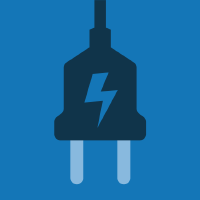Topic Menu
► Topic MenuTopic Editors



Smart Grids: Electrical Power Networks and Communication Systems
Topic Information
Dear Colleagues,
Electrical power grids and communication systems are the foundation of the energy transition that will be required in the coming years. These infrastructures should be more secure, reliable and resilient, in order to enable the integration of more renewable energy sources and new types of loads and consumers. Coordination between stakeholders, market and grid operators requires new approaches and tools for managing energy systems. However, improved ICT technologies need to be developed to provide the required level of coordination. We are pleased to invite the research community to submit review papers or regular research papers on topics including but not limited to the following, related to electric power grids and communication systems:
- Hydrogen systems;
- Storage technologies and systems;
- Demand response;
- Electrical Vehicles;
- Planning, operation, control, and management;
- Modeling, simulation, and data management;
- Power electronic converters and drives;
- Smart thermal grids;
- Smart gas grids;
- Smart electricity grids;
- Energy efficient systems;
- Virtual power plants;
- Renewable energy production and integration;
- Micro-Grids;
- Off-grid hybrid renewable systems;
- Artificial intelligence and optimization;
- Smart homes, cities, and communities;
- Efficient buildings and Net Zero Energy Buildings;
- Power quality;
- Protection systems and reliability;
- Sensors, communications, and intelligent networking;
- Security and privacy of data exchange;
- Local markets;
- Flexibility markets;
- Internet of Things;
- TSO/DSO coordination;
- Edge devices and intelligence.
Dr. Hugo Morais
Dr. Junjie Hu
Prof. Dr. Matej Zajc
Topic Editors
Keywords
- Smart Grids
- Power System Reliability and Resilience
- Power System Flexibilities
- Electricity Markets
- System Operators Coordination
Participating Journals
| Journal Name | Impact Factor | CiteScore | Launched Year | First Decision (median) | APC |
|---|---|---|---|---|---|

Electricity
|
1.8 | 5.1 | 2020 | 26 Days | CHF 1200 |

Electronics
|
2.6 | 6.1 | 2012 | 16.8 Days | CHF 2400 |

Energies
|
3.2 | 7.3 | 2008 | 16.2 Days | CHF 2600 |

Preprints.org is a multidisciplinary platform offering a preprint service designed to facilitate the early sharing of your research. It supports and empowers your research journey from the very beginning.
MDPI Topics is collaborating with Preprints.org and has established a direct connection between MDPI journals and the platform. Authors are encouraged to take advantage of this opportunity by posting their preprints at Preprints.org prior to publication:
- Share your research immediately: disseminate your ideas prior to publication and establish priority for your work.
- Safeguard your intellectual contribution: Protect your ideas with a time-stamped preprint that serves as proof of your research timeline.
- Boost visibility and impact: Increase the reach and influence of your research by making it accessible to a global audience.
- Gain early feedback: Receive valuable input and insights from peers before submitting to a journal.
- Ensure broad indexing: Web of Science (Preprint Citation Index), Google Scholar, Crossref, SHARE, PrePubMed, Scilit and Europe PMC.

